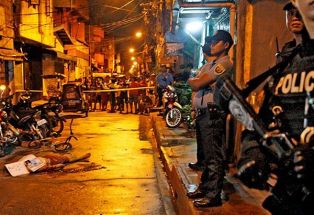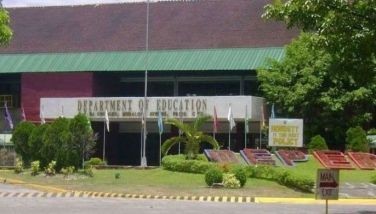Bohol quake among deadliest in Philippine history
MANILA, Philippines - The 7.2-magnitude earthquake, which so far has more than 150 fatalities and heavily damaged well-known landmarks in Central Visayas, would go down in history as among the country's deadliest quakes and the second most powerful in the 21st century.
1. The deadliest and strongest quake recorded is the 7.9-magnitude midnight shocker in Mindanao in August 16, 1976. It triggered a tsunami in the Moro Gulf that swept through more than 600 kilometers from the coastline and claimed over 4,500 lives.
2. A 7.8-magnitude quake struck Luzon in July 16, 1990 and devastated the cities of Baguio, Dagupan and Cabanatuan. The remains of destroyed structures can still be seen today, most notable of which was the Hyatt Terraces and the Baguio Park Hotel.
"It was said to be the most destructive earthquake on record within the Cordillera Region. There were numerous aftershocks that followed and the strongest, which occured at 3:15 a.m. of July 18, lasted for eight seconds and measured 5.3 on the Richer scale," recalled Juny La Putt, a Filipino living in Hawaii. La Putt frequented Baguio and documented the quake's aftermath.
3. In November 30, 1645, the Manila Cathedral and other newly-built churches in Manila were severely damaged by a 7.5 quake in Luzon--the strongest recorded tremblor since the Spaniards set foot on what would become the Philippine islands.
Structural engineers Leonila and Bartolome Bautista wrote that no earthquake was felt for 40 years before it that residents constructed "tall, spacious and palatial" homes--150 of which collapsed during the 1645 earthquake.
4. Claiming over 270 lives, the earthquake that shook Casiguran, Aurora in August 2, 1968, affecting even the urbanized Manila and caused the collapse of major buildings in Binondo and Escolta.
"This was considered the most severe and destructive earthquake experienced in the Philippines during the last 20 years," some Japanese scholars wrote in a UNESCO journal in the 1960s.
5. The recent Bohol quake can be considered the fifth worst seism that rocked the country as it registered 7.2 in the Richter scale.
The October 15, 2013 earthquake as captured in CCTV cameras of a Cebu City commercial establishment
Belgian scientists Armand Varvaeck and James Daniell of Earthquake Report called it a "massive extremely dangerous earthquake." The magnitude of its aftershocks ranged from a virtually unfelt 2.8 to a radical 5.1.
"Based on theoretical calculations, nearly 3.6 million people should have felt a very strong shaking and 7.6 million people a strong shaking. Based on the incoming reader reports from places at less then 100 km from the epicenter we are receiving strong shaking values, a little less than the theoretical outcome," the scientists wrote.
| Date | Epicenter | Magnitude | Fatalities |
|---|---|---|---|
| August 16, 1976 | Moro Gulf (tectonic) | 7.9 | 4791 |
| July 16, 1990 | Central Luzon (tectonic) | 7.8 | 1666 |
| November 30, 1645 | Central Luzon (tectonic) | 7.5 | 450 |
| August 2, 1968 | Aurora (tectonic) | 7.3 | 271 |
| October 15, 2013 | Bohol (tectonic) | 7.2 | 151+ |
| November 15, 1994 | Mindoro (tectonic) | 7.1 | 78 |
| February 6, 2012 | Negros Oriental (tectonic) | 6.7 | 51 |
| January 24, 1948 | Antique (tectonic) | 8.3 | few |
| June 19, 1665 | Manila (tectonic) | data not available | 19 |
| August 17, 1983 | Laoag (tectonic) | 6.5 | 16 |
- Latest
- Trending





























